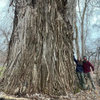Emmenopterys henryi, do you enjoy the fragrant?
snasxs
13 years ago
Related Stories

LANDSCAPE DESIGNAll-White Gardens Light Up the Night
Lustrous blooms in white, cream and the palest ivory enchant in the landscape at night — and can be practical too
Full StorySponsored
Columbus Area's Luxury Design Build Firm | 17x Best of Houzz Winner!
More Discussions








Embothrium
snasxsOriginal Author
Related Professionals
Norfolk Landscape Architects & Landscape Designers · West Milford Landscape Architects & Landscape Designers · Canton Landscape Contractors · Pottstown Landscape Contractors · Williamsburg Landscape Contractors · Belmont Landscape Contractors · Gaithersburg Landscape Contractors · La Verne Landscape Contractors · Newberg Landscape Contractors · Northport Landscape Contractors · Brunswick Siding & Exteriors · Madison Siding & Exteriors · Puyallup Siding & Exteriors · Asheville Decks, Patios & Outdoor Enclosures · Cedar Falls Decks, Patios & Outdoor EnclosuressnasxsOriginal Author
snasxsOriginal Author
Embothrium
snasxsOriginal Author
pineresin
lkz5ia
Embothrium
chrisu
snasxsOriginal Author
snasxsOriginal Author
snasxsOriginal Author
snasxsOriginal Author